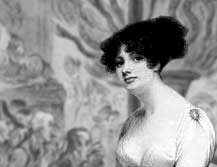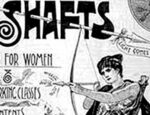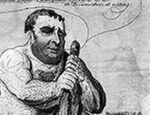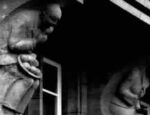Description
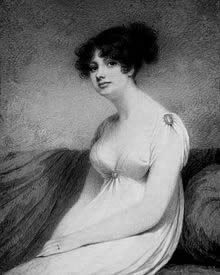
Admire the steady nerves of Mary Ann Clarke, the lower-class ex-mistress of the Duke of York, likened in this cartoon to Pandora opening her box. Clarke had articulately defended herself against allegations of corruption before the House of Commons.
Clarke was the daughter of a ‘humble tradesman’, and had married a stonemason at the age of nineteen. Dissatisfied with his income, she left him for a career as a courtesan. She had become the mistress of Frederick, Duke of York, the second son of George III, in 1803 when he was Commander-in-Chief of the army. In 1806 he had rejected her but given her an annual stipend, it was widely believed on condition that she remained silent about dodgy financial dealings relating to the sale of army commissions.
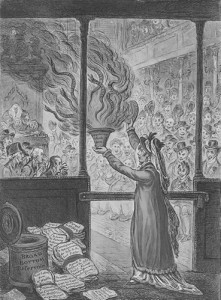
When the Duke cut off her allowance, she publicly blackmailed him by threatening to leak ‘everything which has come under my knowledge during our intimacy, with all his letters.’ She may or may not have been operating in concert with an embittered ex-colonel named Wardle who made allegations against the Duke. Called during the scandal, which peaked in 1809, to testify before Parliament, she gave a bravura performance, and refuted all allegations with ease. Even William Wilberforce recorded in his diary that she had ‘clearly got the better in the tussle.’
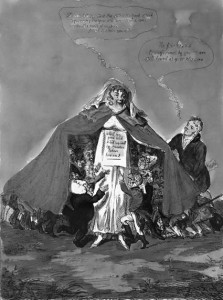
In this cartoon (right) by James Gillray, the adventuress’s testimony is likened to the swarm of evils which flew out of Pandora’s box, here labelled ‘Opposition Stink Box’. They include Deceit, Revenge, Perjury, Forgery, Lies, and Calumny. The documentary evidence at her feet is labelled ‘Commissions and appointments for sale’, ‘Scheme to destroy the House of Brunswick’, ‘Prices of Commissions’ and ‘Love Letters from Mr Waddle’ (her alleged co-conspirator’s surname perhaps deliberately mis-spelt by the cartoonist to underline her common origins).
Clarke was bought off by the monarchy for £7,000 and a stipend of £400 a year. Fredrick had to tender his resignation from the army, although he was subsequently reinstated. The extraordinary threat this working-class woman had briefly posed to the royal family elicited several other comparisons with dangerous females in classical mythology. Isaac Cruikshank’s cartoon portrayed her as ‘The Modern Circe.’

